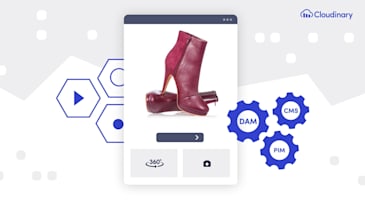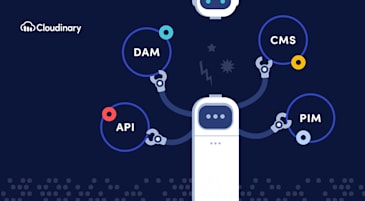You’re likely reading this post on a laptop or phone since desktops are no longer the most popular computing device. Nowadays, most IT work occurs beyond physical offices among remote workforces. With cloud-based systems continuing to be ubiquitous, other technologies have emerged, including microservices and headless architecture.
At the forefront of IT priorities are MACH technologies, with which enterprises are building an ecosystem in which “every component is pluggable, scalable, replaceable, and can be continuously improved through agile development to meet evolving business requirements.”
MACH architecture is a group of technology principles and the acronym stands for: Microservices-based, API-first, Cloud Native and Headless. This post describes the components and their relationships and benefits.
Given that, as time goes on, upgrading, optimizing, and scaling monolithic apps tends to become time consuming and costly, many enterprises switch to microservices by replacing a monolithic solution with smaller applications. Gratifyingly, you can quickly and independently deploy and manage microservice apps, all of them autonomous and each fulfilling a business function. Testing, iterations, and replacements can take place without disrupting other apps.
Keep in mind, however, that the growing popularity of microservices does not mean that legacy solutions are inherently bad. In fact, an engineer at freeCodeCamp raised this point: “Many microservice advocates actually recommend starting out with a monolith and sticking with it until you start running into problems. You can then break your monolith into microservices naturally over time.”
As an example, consider someone starting a business and doing it all for a while. As the business grows, flying solo becomes too daunting, and adding staff for various functions is a matter of course. Moreover, as much as the company goal stays the same, new blood often brings specialized and proficient talent and expertise.
A succinct analogy—”a shopping mall”—from the developer chatter on Reddit paints a descriptive picture of microservices: “Instead of tearing down the mall each time something changes, with microservices you can add or remove ‘stores’ on demand. If you have seasonal demand, you can quickly add pop up shops to handle the volume and tear them down just as easily without impacting the other stores.”
The “M” in MACH architecture stands for Microservices.
The API [application programming interface] is the conduit through which apps interact. Multiple APIs form a microservices-based architecture through a common language, facilitating data exchange among the services. An excellent analogy for an API is a restaurant’s servers, who act as the go-between between patrons and the kitchen staff, ensuring that orders, modifications, and special requests are passed on to the chefs.
While evaluating technology vis-a-vis MACH, be sure to find out if the vendor’s development approach is API first. More on that in the next post of this MACH series.
The “A” in MACH architecture stands for API-first.
The cloud affords you the ability to scale and adapt. Besides being cloud based or cloud enabled, cloud-native apps are designed for cloud computing and delivery through the cloud. As businesses grow and adapt to changes, cloud-native apps breed innovation and speed up the creation and optimization of microservices, assuredly accelerating the process of project initiation to delivery.
The “C” in MACH architecture stands for Cloud Native.
A microservice approach is about function; a headless approach, about presentation. Going headless means separating the front-end delivery, i.e., user experiences, from the back-end technology. With a headless architecture, you can integrate vendor solutions or microservice apps into a single, customized, and easy-to-manage platform on which your apps interact through APIs.
A significant benefit of such a setup is that you can create user interfaces and customer touchpoints at will, free from the constraints imposed by a predetermined “head” or experience built into your e-commerce platform, for example.
The “H” in MACH architecture stands for Headless Architecture.
As you look to beef up your tech stack, bear in mind the advantages of the MACH architecture, which serve well as a checklist to determine if the solutions being evaluated are up to the task. Coming up in this MACH series are three posts that answer these questions:
- Why should you take an API-first approach?
- Why should you go headless?
- What is the MACH Alliance?
Our webpage on headless Digital Asset Management explains that solution’s benefits. Do have a look.




